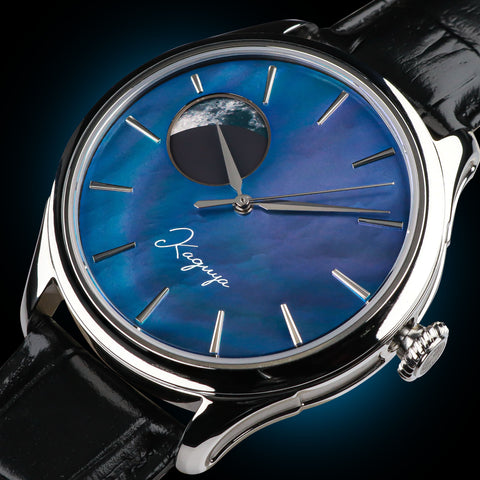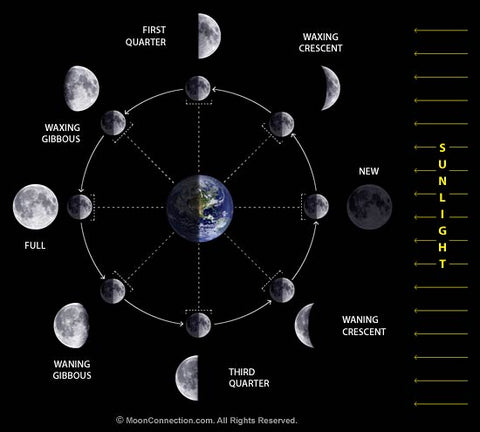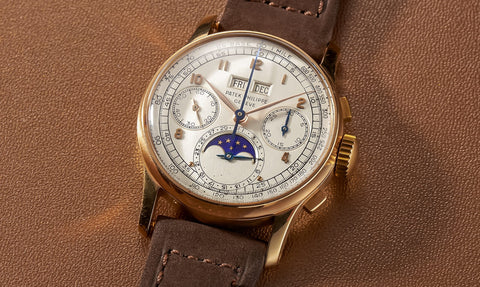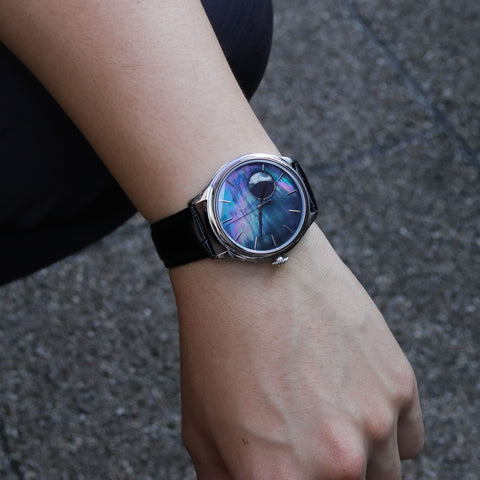Since the dawn of civilization, man has looked up at the stars and wondered about their place among them. They have also wondered if the sun would ever rise again, and if the moon was a god that required sacrifices. In the process of looking upon the sun, the moon, and the stars for guidance, mankind not only learned about astronomy, but they formed the foundations of horology. Even before days had been separated into 24-hour segments on giant sundials, ancient horologists determined the time and weather by tracking lunar cycles or, more specifically, phases of the moon.
While we have created far more efficient, scientific methods of telling the time, the moonphase complication on watches or moonphase watches in general have become a beautiful and interesting type of watch for decades (or an entire century in 2025). Is this just a gimmick? The answer, as with the movement needed to create a moonphase watch, is complicated.
A BRIEF HISTORY OF MOONPHASE WATCHES
The first moonphase wristwatch was made by a small, unknown brand called Patek Philippe, which was dubbed the Perpetual Calendar 97975. Although this watchmaker remains unknown to even diehard collectors, this moonphase complication has influenced the likes of Rolex and Jaeger-Lecoultre and Vacheron Constantin to create their own versions, and it has a small - but dedicated - following of this niche. Despite its increasing popularity, however, the moonphase complication and its function remains essentially the same as its inception.
THE TWO TYPES OF MOONPHASE WATCHES
The two types of moonphase watches - bosom and radial - both indicate the moon phase for that particular night, but the bosom moonphase is much more popular, considering it actually shows the phase of the moon on a disc by spinning a wheel. The radial moonphase watch, on the other hand, simply uses hands on the dial to indicate the phase of the moon. Both are complicated and unique movements, yet the bosom moonphase - which reveals the moon in a way that is similar to an Open Heart on a dial - is a visually arresting sight.

HOW DOES A MOONPHASE WATCH WORK?
The original moonphase watch worked by rotating a 59-tooth gear or wheel which would mark the progression of 24 hours by moving up to the next tooth or ridge on the gear. This resulted in a surprisingly accurate mechanical movement indicating the four main phases of the moon (New Moon, First Quarter, Full Moon, and Last Quarter).
- New Moon: With the sun shining directly behind the New Moon, this has been nicknamed the "Invisible Moon" in some circles.
- First Quarter: The right side of the moon is partially illuminated.
- Full Moon: The entirety of the moon is illuminated by the sun.
- Last Quarter (Balsamic Moon): The left side of the moon is partially illuminated.

The decision to focus on only four phases of the moon was likely a pragmatic one, since the difference between a waning gibbous and a waxing gibbous may not be worth the additional complication for such little payout. Since the lunar cycle only lasts 29.5 days, the moonphase complication cannot be completely accurate forever, so you will have to reset it every three years. If resetting the moonphase complication every three years is too complicated, they have developed moonphase watches that utilize a 135-tooth gear, which will remain accurate for over an entire century.

DO YOU NEED A MOONPHASE WATCH?
The answer is no. The truth is, no one even needs a wristwatch or a clock at all. However, collecting wristwatches has not been about telling the time since the advent of smartphones and computers. However, collecting watches and more specifically, moonphase watches, is not about telling the time or relying on it to inform you about the status of the lunar cycle. Collecting a moonphase watch is not a question of its accuracy versus a google search; instead, it is about collecting a timepiece that honors ancient horology that doubles as a nice, classy accessory for your wrist.






Comment
For any serious collector, Coveted is a go-to site. The adventurous Rolex Explorer II is perfect for explorers. Meanwhile, the sleek Cartier Tank Must is an elegant choice for formal occasions. The robust Panerai Luminor Marina blends style and utility beautifully. Don’t miss the ultra-thin design of the Bulgari Octo Finissimo for modern minimalism.